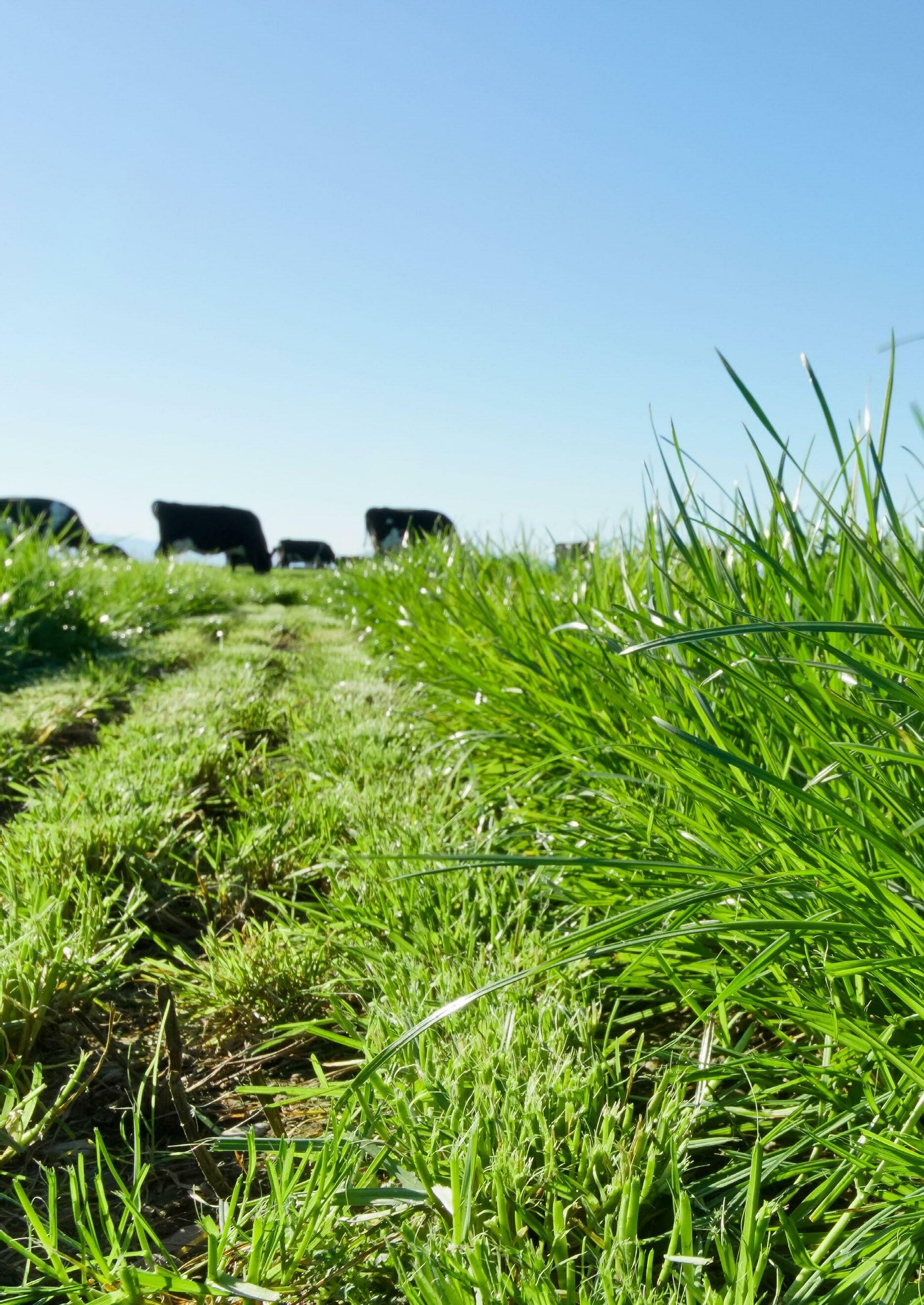
4 minute read
Introduction
Innovative products with measurable benefits
A seventh-generation family business, Germinal has been part of New Zealand’s pastoral sector since the early 2000s. As farmers ourselves, we understand the importance of using high-quality seed that delivers measurable benefits.
Advertisement
Our product performance is built on the integrity of tested research and development. Germinal’s research partner is the Institute of Biological, Environmental and Rural Sciences (IBERS) in Wales. This exclusive collaboration allows us to draw on world-leading science and apply it to New Zealand’s unique conditions. We have also established a plant breeding programme in Canterbury, as we recognise the importance of breeding for New Zealand, in New Zealand. This research is supported by on-farm trials throughout the country – ensuring our products perform under real-life conditions and for a range of farming systems. Our partnership with IBERS enables us to contribute to the long-term sustainability and profitability of New Zealand’s farming industry, by producing top performing varieties with unique characteristics. This has led to the development of innovative products such as AberLasting – the world’s first successful cross of Caucasian and white clover, proven to withstand environmental extremes that would wipe out 70 percent of other white clover varieties.
This 2020/21 product catalogue also includes Germinal’s award-winning range of high sugar grasses, which are scientifically proven to reduce methane emissions while boosting livestock performance. Farmers report the pasture is ‘grazed like a mower’, the lambs stay clean, the bulls are more content, and deer are reluctant to walk out for another paddock of conventional ryegrass. At Germinal New Zealand we are proud to be a progressive company, engaging with farmers at ground level to support a thriving and environmentally-aware rural sector. Our plant breeding programme has resulted in ground-breaking products, and demonstrates our commitment to making a difference – leading the way for a sustainable future. We look forward to helping you build a profitable business.
Sarah Gard General Manager, Germinal New Zealand

Benefits of Aber® High Sugar Grass Your stock will thrive on it
All farmers want their stock to thrive. Fundamental to that is palatable and nutritious pasture that can recover strongly between grazings, persist well, tolerate heavy traffic when wet underfoot and lift animal production.
Aber grasses have been developed to consistently offer:
• Improved digestibility
• Better nutrition • Greater animal productivity
• Enduring persistence
• Environmental benefits
Benefits of Aber High Sugar Grass over standard ryegrass:
• 5% gain in digestibility3 • 1.4 extra litres of milk per day4 • 100g extra of liveweight per lamb per day4 • 200g extra liveweight per cow per day4
Improved Digestibility
Aber HSG varieties are more digestible because they contain lower levels of fibre and more water soluble carbohydrates1 .
Digestibility is a measure of how much of the feed eaten can be used by the animal for metabolic functions including maintenance, growth, milk production and reproduction. Digestibility is measured in the laboratory using synthetic enzymes, which simulate the digestion process that occurs within an animal. The results are used to estimate the Digestible Organic Matter in the Drymatter % (DOMD) which is commonly referred to as digestibility. Higher digestibility values are beneficial because they drive higher feed energy values and higher intakes.
Metabolisable Energy (ME) is the amount of energy an animal can derive from a feed. It is measured in megajoules of energy per kilogram of forage drymatter (MJ/kgDM). There is a direct relationship between digestibility and metabolisable energy. One percentage increase in digestibility (DOMD) equates to an additional 0.15 MJ/kgDM of ME2 .
The perennial diploids AberMagic and AberGreen have been shown to have a digestibility of 5.0% and 5.5% respectively higher than another commercially available perennial ryegrass3. This difference is calculated to produce an extra 1.4 –1.5 litres of milk per day from a dairy cow4 .
Better Nutrition
Aber® High Sugar Grasses (HSG) are bred to produce more water soluble carbohydrate (WSC) or sugar energy – delivering up to 17% more WSC than a standard diploid perennial ryegrass5 .
As well as more sugar energy the research shows AberMagic has lower levels of fibre than control diploid and tetraploid ryegrasses and less crude protein than a tetraploid ryegrass. AberMagic’s lipid (wax, oil and fat) content, another source of energy, is 15% higher than a standard diploid ryegrass5 .
Greater Animal Productivity
Farmers have seen Aber HSG pasture grazed ‘like a mower’, the lambs stay clean, the bulls more content and the deer reluctant to walk out for another paddock of conventional ryegrass.
An AgResearch trial showed cows fed Aber HSG produced 10% more autumn milksolids than cows fed a standard ryegrass6. Overseas trials have shown 6% more milk per cow and a 20% higher daily liveweight gain for lambs and beef cattle when fed or grazed on Aber HSG7 .
Why the increase in production?
• Aber HSG’s improved digestibility increases the supply of readily available energy to assist in building more microbial protein in the rumen • Aber HSG’s enhanced palatability encourages increased intake of dry matter
Scientists calculate a digestibility gain of 1% enables a dairy cow to produce an extra 0.28 litres per day, a beef animal to produce an extra 40 grams of meat per day and a lamb to gain an extra 20 grams of meat per day4 . AberMagic and AberGreen, being 5.0% and 5.5% respectively higher in digestibility when compared with a standard ryegrass3, offer the potential for dairy cows, beef cattle and lambs to significantly increase milk or meat production.


